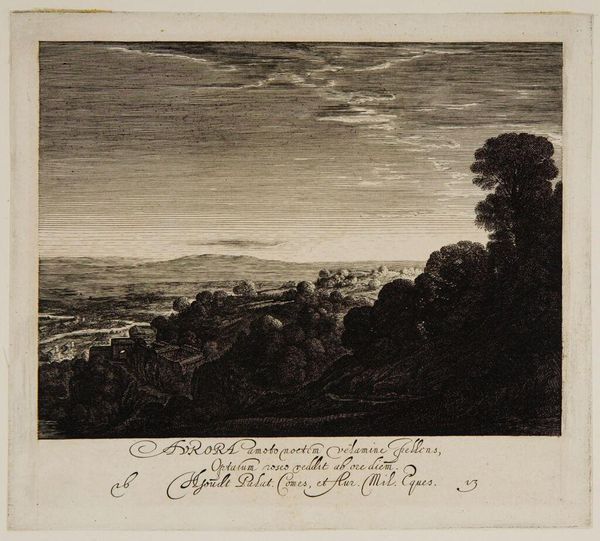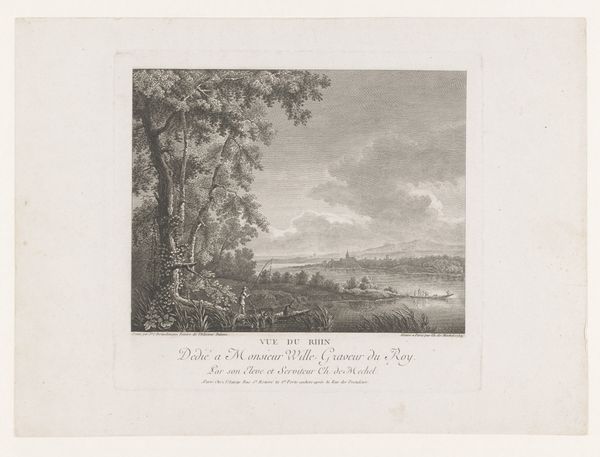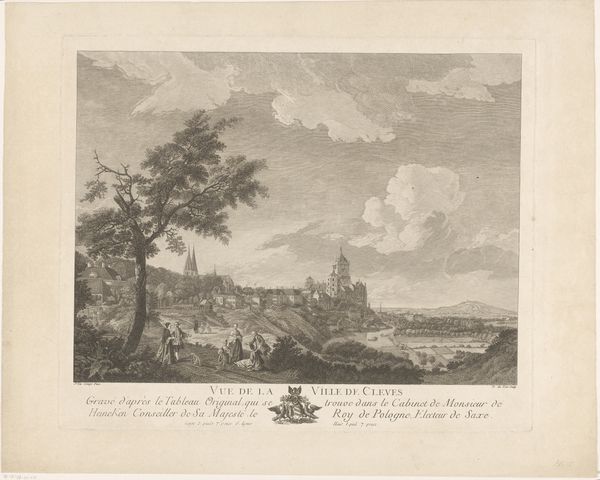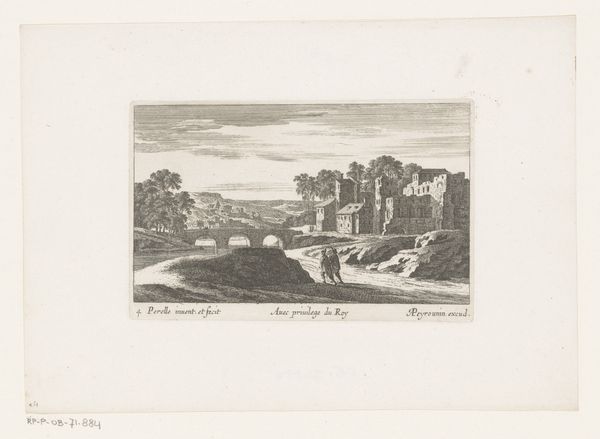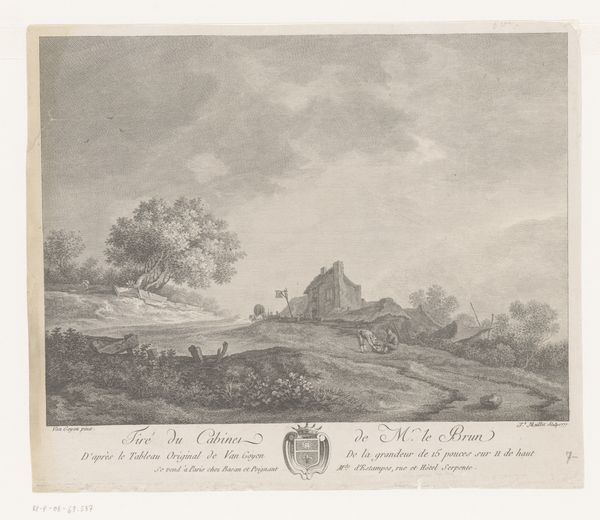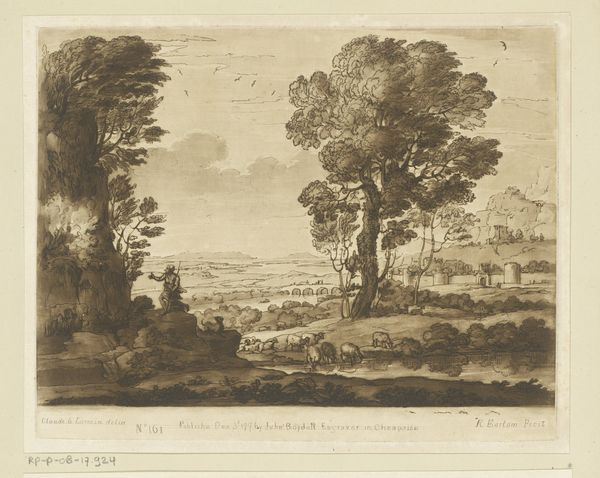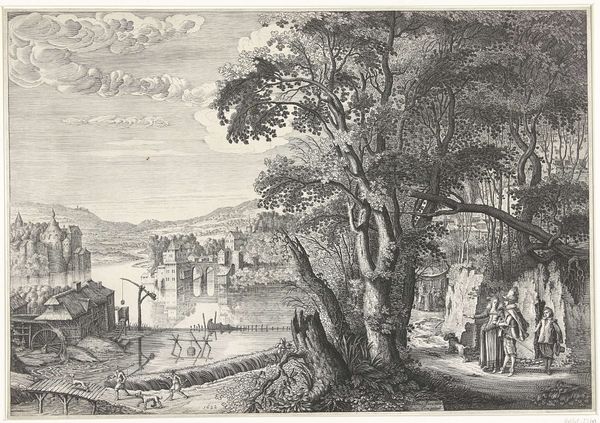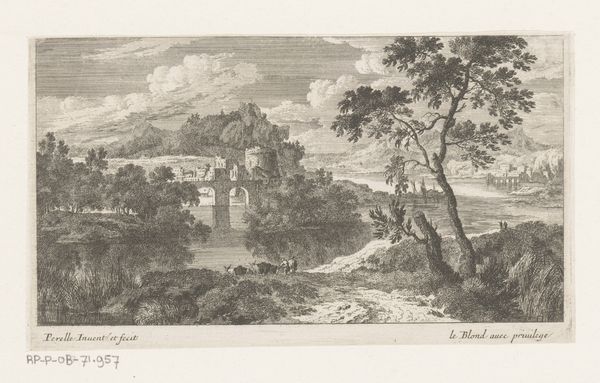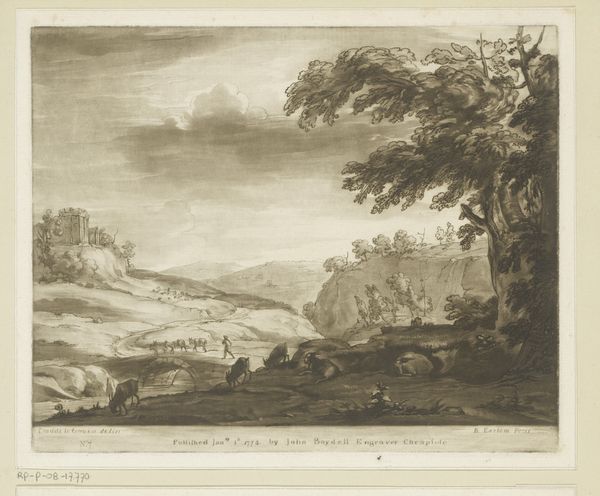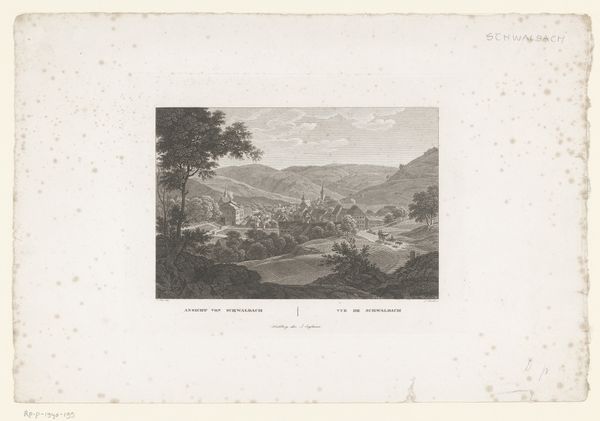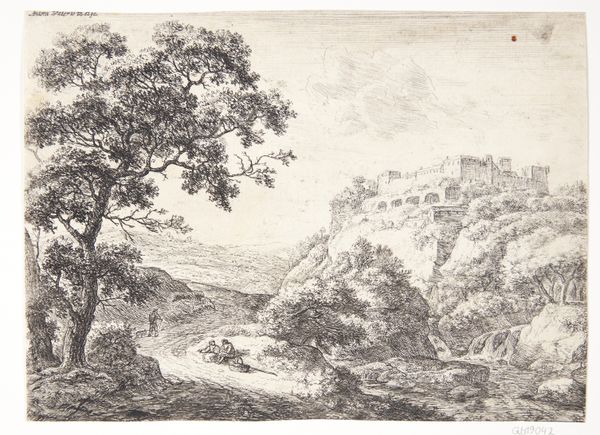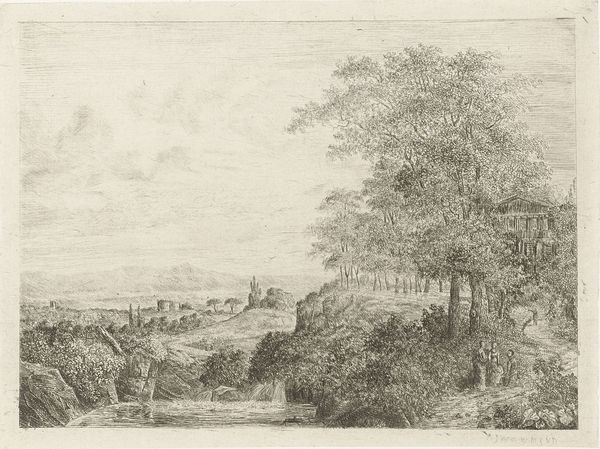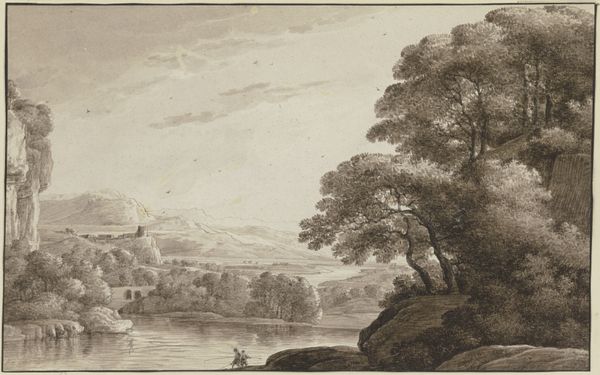
drawing, print, engraving
#
tree
#
drawing
#
sky
#
baroque
# print
#
old engraving style
#
landscape
#
personal sketchbook
#
line
#
northern-renaissance
#
engraving
Dimensions: plate: 6 9/16 x 7 5/16 in. (16.6 x 18.5 cm) sheet: 6 13/16 x 7 9/16 in. (17.3 x 19.2 cm)
Copyright: Public Domain
Editor: Here we have Hendrick Goudt’s "Aurora," an engraving dating between 1590 and 1648. I’m struck by the intricacy of the lines; it almost looks like a pen and ink drawing rather than a print. What stands out to you in terms of how this work was produced? Curator: As a materialist, my interest lies in the "how" – the conditions of its creation. The very nature of printmaking in this era points to a democratizing force. Engravings like these, multiples, meant images were no longer solely the province of the wealthy who could commission paintings. How does this availability impact the perception of landscape imagery at the time? Editor: That's a really interesting point. It shifts the landscape from something personally owned to something more widely accessible through a purchasable, reproducible format. How would this engraving process itself have influenced the artist's choices in composition and style? Curator: Absolutely. The limitations and affordances of the engraving tools dictate a certain aesthetic. Notice the reliance on line, hatching, and cross-hatching to simulate light and shadow. This isn’t about mimicking reality, it’s about a mediated experience through a particular technology of reproduction, connecting to broader issues of materiality and labor. Editor: So, instead of seeing it as a simple landscape, we should consider the social and economic forces that enabled its production and circulation? Curator: Precisely. The consumption of prints like "Aurora" becomes part of a larger discussion about early modern visual culture, commerce, and the rise of a more widespread image economy. We can consider that in terms of current trends as well, given our reliance on screens today for seeing artworks. Editor: That's a completely different way of looking at it! I guess I hadn’t considered how the material processes can have broader cultural implications like that. Curator: Art always tells the story of the hand that made it.
Comments
No comments
Be the first to comment and join the conversation on the ultimate creative platform.
